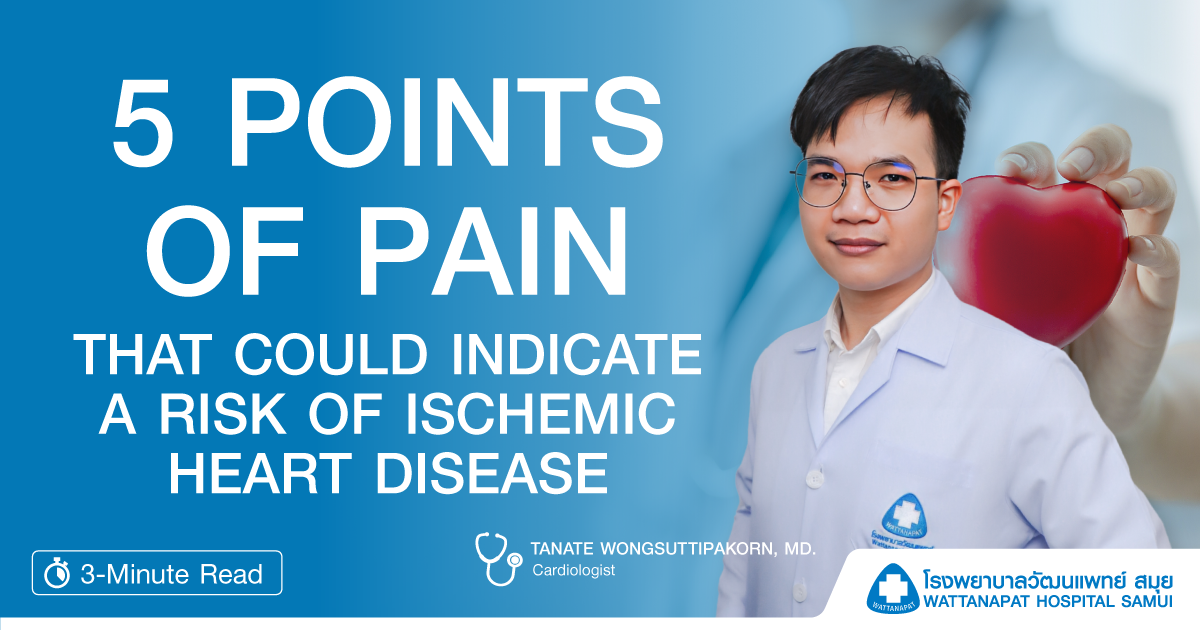5 Points of Pain That Could Indicate a Risk of Ischemic Heart Disease
5 Points of Pain That Could Indicate a Risk of Ischemic Heart Disease

Ischemic heart disease is one of the most critical health issues faced by humanity. Contrary to what many might think, its symptoms don’t always manifest as straightforward chest pain. Instead, it can present as pain in various parts of the body, a phenomenon known as "Referred Pain" — discomfort in one area triggered by an underlying issue elsewhere. In this article, we’ll explore five regions where pain might indicate a risk of ischemic heart disease.
What is Referred Pain?
Referred pain occurs when discomfort is felt in one part of the body, but the actual source of the pain stems from a different location. This phenomenon typically arises because the body’s nerves transmit signals from internal organs and redirect them to other body areas, leading to pain in places unrelated to the root cause.
Key Pain Areas to Watch for Ischemic Heart Disease
1. Chest Pain
Chest pain remains the most recognizable symptom of ischemic heart disease. However, this pain may only last briefly and may not always be severe. You might experience a sense of heaviness or tightness in your chest. While subtle, it should never be overlooked.
2. Jaw Pain
Jaw pain might seem like an unlikely indicator of heart problems, but it can indeed result from ischemic heart disease, particularly in women.
3. Pain in the Left Arm
Discomfort radiating through the left arm is a significant warning sign of ischemic heart disease. Often starting in the chest, this pain extends to the left arm and serves as a crucial symptom not to be ignored.
4. Upper Back Pain
Sudden, sharp pain in the upper or middle back might also be a sign of heart disease. This discomfort could signal a lack of blood flow to the heart, manifesting in regions other than the chest.
5. Neck and Shoulder Pain
Neck or shoulder pain can also be linked to ischemic heart disease, particularly if the pain is persistent or seems to radiate from the chest.
Additional Symptoms to Monitor
Beyond pain, other warning signs such as excessive sweating, difficulty breathing, dizziness, or fatigue should also be observed. Identifying these in conjunction with Referred Pain can help you determine when it’s time to seek medical advice.
What to Do if You Experience Pain Related to Ischemic Heart Disease
Don’t Ignore the Pain
If you feel pain in these high-risk areas, do not dismiss it. Ignoring such discomfort can lead to more severe complications, including a full-blown heart attack.
Consult a Doctor
Seeking professional medical advice is the best way to ensure a correct diagnosis. If you experience Referred Pain along with other heart disease symptoms, it’s imperative to see a doctor immediately.
In conclusion, ischemic heart disease may not always present as obvious chest pain. Instead, it can manifest as Referred Pain in various areas such as the jaw, left arm, upper back, neck, or shoulders. Recognizing these signs early can help you prevent the disease from escalating. If you experience any of these symptoms, consult a healthcare professional for thorough diagnosis and timely treatment.
 |


